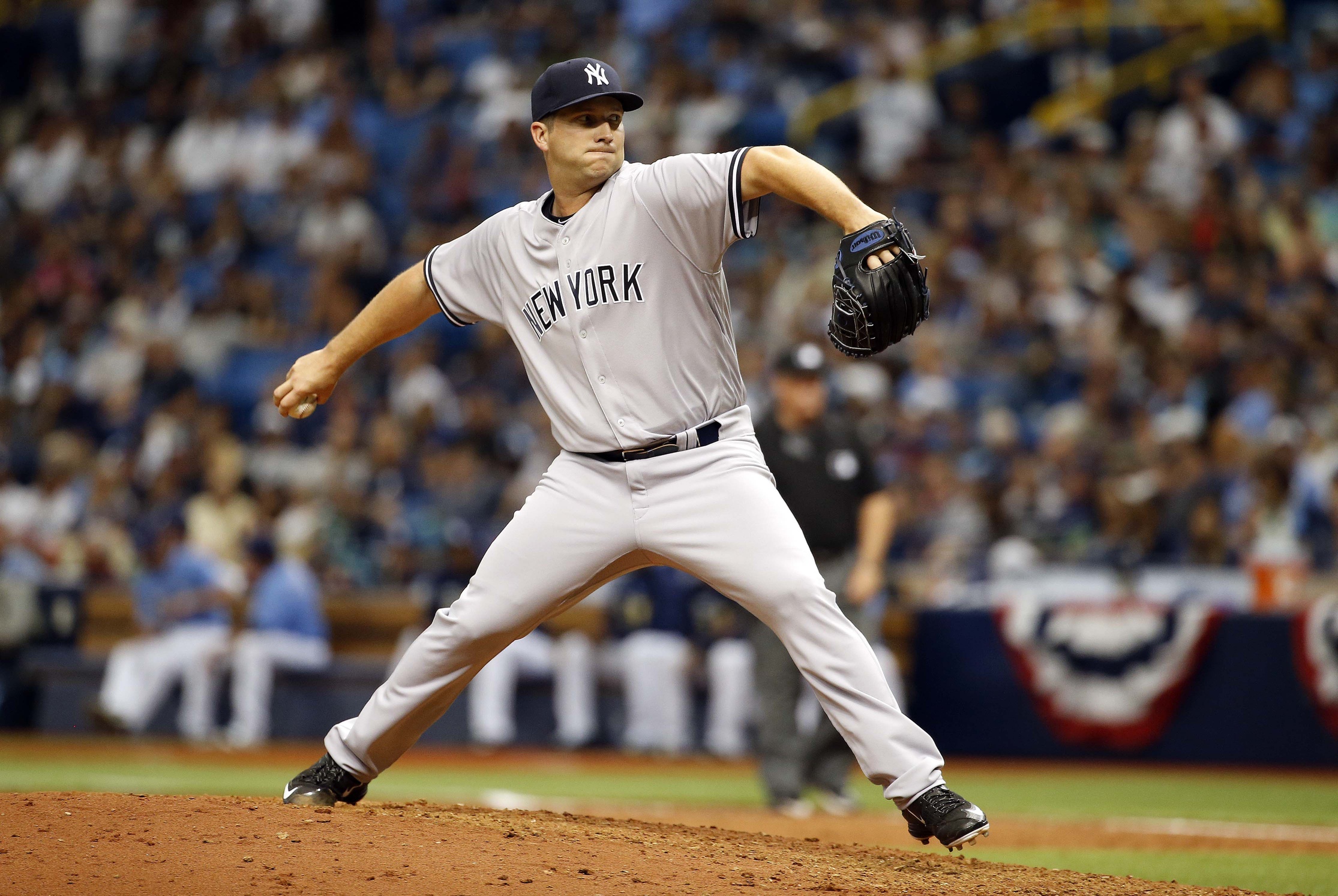Ah, the old-age debate of whether Adam Warren should be a starter or reliever. It feels as though this dispute has been exhausted over the past few seasons, but here we are in 2017 still talking about it.
Joe Girardi announced at the end of spring training that Warren would be coming out of the bullpen to start the 2017 season, but there’s always a chance he could be stretched out again. Should he be, though?
Despite being 29-years-old and entering his fifth full season as a major leaguer, Warren’s long-term role with the Yankees remains unclear. Not surprisingly, Warren has repeatedly stated his desire to be a starting pitcher. Nonetheless, he has continually maintained that he will do what is best for the team, and — at this point — that is pitching in relief.
The Yankees took Warren in the fourth round of the 2009 MLB draft. Throughout the minors, he was strictly a starter – all 92 of his appearances came in the role. However, only 21 of his 205 career big-league appearances have been as a starter. In 2013, the Yankees needed bullpen help and elected to solve the problem internally, assigning Warren to the long-relief role. He thrived in the bullpen, recording a respectable 3.39 ERA and 3.80 DRA in 77 innings that season. The following season, Warren improved upon those numbers, posting a 2.97 ERA and, perhaps more impressively, a 2.82 DRA in 78 and 2/3 innings out of the bullpen. He seemed to have settled into the long-relief job well, and the Yankees were keen on keeping him in that role.
In 2015, the Yankees lack of starting pitching depth forced them to move Warren to the rotation for a limited time. The change did not phase him. He made a career-high 17 starts, recording a 3.66 ERA in 96 innings over that span.
Heading into the 2015 offseason, the Yankees were faced with a tough decision. Should Warren be a starter or reliever in 2016? He had succeeded in both roles, making for a good debate. Instead of reaching a solution, the Yankees ended up trading Warren to the Chicago Cubs in return for Starlin Castro. At the time, the Yankees seemed somewhat reluctant to trade Warren after three consecutive successful seasons, but they had a pressing need to fill a second base position that had been in flux since the departure of Robinson Cano.
The Cubs ended up utilizing Warren as a reliever rather than as a starter. Despite his past success, Warren struggled immensely out of the bullpen with the Cubs. He posted a miserable 5.87 ERA, although a slightly better 4.88 DRA, in just 35 innings. The Cubs seemingly gave up on Warren and traded him back to the Yankees in the Aroldis Chapman deal.
The Yankees had their man back, but were faced with the same problem. Was Warren better suited out of the bullpen or the rotation? Only two of the ten most comparable players to Warren per Baseball Prospectus are or were full-time starters for most their career: Roberto Hernandez and Randy Wells (not that one).
Let’s take a closer look at Warren’s splits:
Yes, Warren has spent more time as a reliever than as a starter in his career, so the sample sizes are not identical. That does not mean the numbers should be completely ignored. His career ERA as a reliever is moderately better – 0.37 runs better to be exact – than his ERA as a starter.
Again, the differences are minimal. Batters have reached base a tad more off Warren when he is starting, but slug .017 points lower against Warren when he starts. It makes sense since Warren induces less hard-contact and allows fewer line drives when starting.
Okay, the numbers are similar on the surface. But how does he fare when he faces the same lineup two or three times in a single night? Common sense would say that he is better against the lineup the first time through and then tires out. The numbers say something else.
The difference in numbers speak for themselves, but they do not make much sense. He thrives out of the bullpen, but struggles immensely the first time through the order when he starts. He is at his strongest the second time through the lineup – something he rarely does when he relieves. He tires out a bit the third time through the order, but he is still noticeably better relative to the first time through the lineup.
Opponents slash line against Warren the first time through the order when he relieves?
.235/.307/.371
So, when is Warren at his strongest? Let’s look at his numbers based on his pitch count (note this combines his numbers as a starter and reliever).
Warren’s performance does not drastically change based on the number of pitches he has thrown. His lowest BAA is between pitches #51-75. Opponents’ lowest slugging percentage is when Warren is deep into the game. Yes, they are smaller sample sizes because there are far fewer instances where he has thrown 76+ pitches compared to 25 or fewer, but still, Warren does not seem to show alarming signs of fatigue the further he pitches into a game.
There really is no concrete answer as to whether Warren is better suited out of the bullpen or in the rotation. What is clear is that Warren has the ability to be successful in both roles…something that simultaneously serves as his biggest strength and as the biggest obstacle preventing him from receiving a legitimate shot to start consistently. So while the numbers suggest that he could be a viable starter, for now he is just too valuable out of the bullpen.
Lead photo: Kim Klement / USA Today Sports



